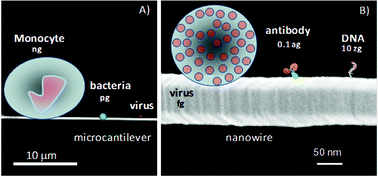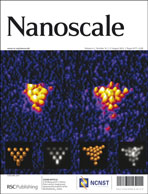Challenges for nanomechanical sensors in biological detection
Abstract
Nanomechanical biosensing relies on changes in the movement and deformation of micro- and nanoscale objects when they interact with biomolecules and other biological targets. This field of research has provided ever-increasing records in the sensitivity of label-free detection but it has not yet been established as a practical alternative for biological detection. We analyze here the latest advancements in the field, along with the challenges remaining for nanomechanical biosensors to become a commonly used tool in biology and biochemistry laboratories.


 Please wait while we load your content...
Please wait while we load your content...